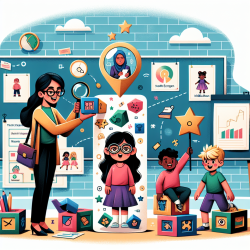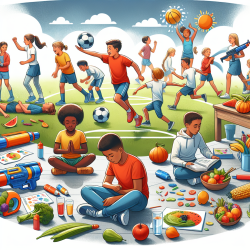Understanding the Relative Age Effect: Insights for Practitioners
The concept of the Relative Age Effect (RAE) is a fascinating yet often overlooked factor that significantly influences child development and talent identification. Originating from research in sports, particularly ice hockey, RAE highlights how an individual's birthdate relative to a cutoff date can affect their participation and success in various activities. As practitioners dedicated to improving outcomes for children, understanding and addressing RAE can enhance our approaches in educational and therapeutic settings.
The Relative Age Effect Explained
The Relative Age Effect refers to the advantage or disadvantage children experience based on their birthdate in relation to a predetermined cutoff date for grouping individuals. This effect is particularly pronounced in competitive sports, where children born closer to the cutoff date often have a developmental advantage over their younger peers within the same age group. This phenomenon is not limited to sports; it can also impact academic performance and social development.
Key Findings from Ice Hockey Research
Research conducted by Grondin and colleagues has provided critical insights into RAE, particularly in ice hockey. Key findings include:
- Children born in the first quarter of the year are overrepresented in competitive sports teams compared to those born in the last quarter.
- The effect is more pronounced in higher levels of competition and in sports with larger participant pools.
- While RAE is less evident in sports with less competition, such as volleyball, it still emerges under certain conditions, such as elite team selection.
- Recommendations include revising categorization systems to mitigate RAE, such as using non-12-month based systems or varying cutoff dates across sports.
Implications for Practitioners
Understanding RAE is crucial for practitioners working with children in educational and therapeutic contexts. Here are some strategies to consider:
- Individualized Assessment: Recognize that children of the same chronological age may differ significantly in development. Tailor assessments and interventions to each child's unique developmental stage.
- Flexible Grouping: Consider flexible grouping strategies that account for developmental readiness rather than strict age-based criteria.
- Advocacy for Policy Change: Advocate for policy changes in educational and sports settings to adopt more equitable grouping practices that reduce the impact of RAE.
- Parental Education: Educate parents about RAE and its potential impact on their child's development and participation in activities. Encourage them to consider this factor when making decisions about their child's involvement in sports or educational programs.
Encouraging Further Research
While existing research provides valuable insights, there is still much to learn about RAE and its broader implications. Practitioners are encouraged to engage in further research to explore the following areas:
- The impact of RAE on social-emotional development and mental health.
- Strategies for mitigating RAE in diverse cultural and educational contexts.
- Longitudinal studies to track the long-term effects of RAE on career and life outcomes.
By understanding and addressing the Relative Age Effect, practitioners can contribute to more equitable and effective practices that support the development and success of all children.
To read the original research paper, please follow this link: To be or not to be born at the right time: lessons from ice hockey.










